Bloomington Transit looks to boost micro-transit numbers with free downtown zone trips
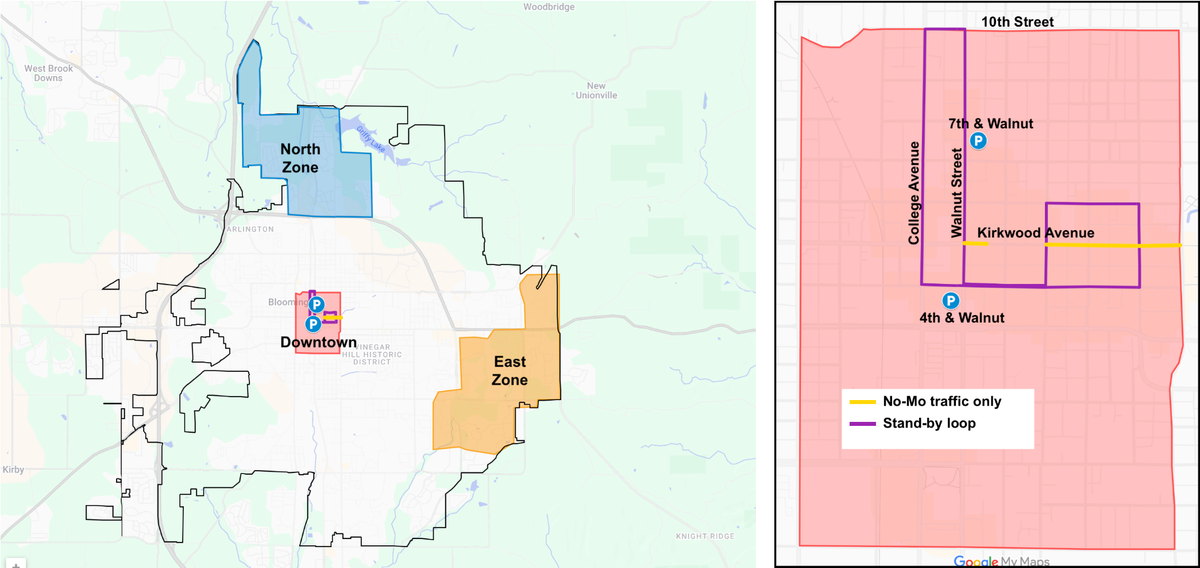
Two ends of the public transportation spectrum got attention at Bloomington Transit's regular meeting on Tuesday—service offered through a smartphone app to serve a single passenger at a time, and regular fixed route service provided by 60-foot articulated buses, carrying up to 100 passengers at a time.
For BT's microtransit service, which is branded as BLink, the board approved a couple of big changes to its existing three-zones of service—East, North, and Downtown.
One change is to the cost, while the other a change to the way the zones define possible trips. Under the new program, which is a pilot starting June 2, it will now be possible to schedule on-demand rides internal to the Downtown zone. Such trips inside the Downtown zone will be free, instead of $2. The other big change is that rides can start and end anywhere in a zone, not just at BT bus stops—so BLink will be offering what's known as curb-to-curb service.
The new free downtown service will operate Monday through Friday, from the hours of 11 a.m. to 2 p.m. and 5 p.m. to 9 p.m.
At its Tuesday meeting, the board also approved the purchase of three 60-foot articulated buses from New Flyer for a total of $3.5 million. The rest of BT's fixed-route fleet is made up of 40-foot buses.
Bloomington Transit's BLink micro-transit service
When the BLink microtransit service was first launched last summer, rides could be ordered through the BLink app between any two of the zones, but not with a start and end point that are both inside a given zone. The cost for trips was set at $2, which is twice the $1 fare for regular fixed-route service.
Google Play BLink
App Store BLink
Under the pilot program, which starts June 2, it will now be possible to schedule on-demand rides that start and end inside the Downtown zone. Such trips inside the Downtown zone will be free, instead of $2. The other big change is that rides can start and end anywhere in a zone. In the original program, a ride had to start and end at BT bus stop. That means in the new pilot program, BLink will be offering what's known as curb-to-curb service.
Two big factors led BT to revise the program at least for this summer's pilot. First, microtransit ridership has been low. In fact it has been zero in the last month, according to Shelley Strimaitis, who is BT's planning and special projects manager.
Second, BT has been called on by some electeds and groups to do something to improve access to businesses on Kirkwood Avenue. For the summer, patrons now can't park on the street right in front of their favorite restaurant or retail store—because of Bloomington's outdoor dining program. The outdoor dining program, which was started in 2020 as a way to help recover from the pandemic, restricts parts of Kirkwood to pedestrians and non-motorized vehicles only.
The idea is that someone could park at a garage, and order a ride from BLink to the intersection of Kirkwood that's nearest to where they want to go. The north-south streets intersecting Kirkwood are still open to car traffic during the outdoor dining program.
There will be a dedicated vehicle with a driver for the downtown zone, to improve response times for the on-demand rides that are ordered through the app.
According to BT general manager John Connell, the fully allocated cost to provide on-demand service is $67 per hour, but the anticipated cost per hour is significantly less. The total project cost is not expected to be more than $30,000, according to Connell. The project can help with driver retention, Connell told The B Square, because it provides some summer hours for drivers who wouldn't otherwise get those hours, due to the summer doldrums from the lack of university classes.
There will be a prescribed loop for the driver in the downtown zone to follow, when there are no on-demand rides in the queue. The driver is supposed to pick up anyone who is visibly waiting. That is, it will be possible to flag down one of the BLink buses for a free ride. But the standby loop does not have the status of a fixed route—that is, it won't show up on the SPOT tracking app that BT makes available for tracking its fixed route buses.
But once a ride is ordered through the BLink app, at the point the bus has someone in the queue, that person will be able to track the bus on the map as it gets closer and closer.
Trying out the pilot microtransit program with free rides was not controversial for board members. Board member Kent McDaniel did say, "I'm not crazy about the concept, but I'm not going to get in the way of it."
Other board members wondered if it might make sense to pilot free rides to the other zones as well. Board president James McLary asked, "If basically nobody is riding it, why don't we make all of it free?" Making all microtransit rides free on a pilot basis for maybe 60 days is something that could be approved by the board at a special meeting that will likely be set for June 3. The other reason a special meeting was likely to be put on the calendar anyway was the potential need for the board to vote on a land purchase for the new operations center.
At the June 3 special meeting, board members are expecting to see some kind of marketing plan for the micro-transit program.
Articulated buses
At its Tuesday meeting, the Bloomington Transit board approved the purchase of three 60-foot articulated buses from New Flyer for $1,066,569 each, to address capacity issues on high-ridership routes. The total amount authorized by the board was $3.5 million, which is more than the cost of each individual bus multiplied by 3. That's because the contract for the buses includes costs that could go up due to new tariffs.
Articulated buses bend in the middle with a bellows mechanism, and can carry more passengers with a single driver than the 40-footers that make up the rest of the fleet.
The new buses will be diesel-powered, according to BT general manager John Connell, because they will initially be deployed on routes that serve Indiana University student areas, which means they'll be idle during the summer. Sitting idle for three months is not good for all-electric battery buses. That's why the choice was made for diesel buses, even though BT has adopted a policy that puts it on course towards an all-electric battery bus fleet.
Delivery of the bigger buses is expected in the third quarter of 2026.
Ridership report
In April, BT's fixed-route ridership showed the first year-over-year improvement for any month so far in 2025. The 267,785 rides taken in April this year were about 1% more than the 265,328 rides recorded in 2025. That leaves BT's fixed route ridership still down through the first four months of the year by about 8% compared to 2024 totals.
One route that board members are checking in particular is the new Route #13 which serves Park 48 and Ivy Tech just outside the western city limits. The numbers for Route #13 for the first four months of the year are: 664 (January); 1,050 (February); 1,172 (March); and 1,374 (April). In April that works out to 0.41 passengers per mile, which makes it the lowest performing route in the system. The next lowest is Route 4 West, with 0.72 passengers per mile. About the number for the new route, board chair James McLary at first questioned whether the Route 13 figures were included in the board's meeting information packet, but then said, "Oh yes, I did see it, because I remember saying, 'Oh my goodness!'"
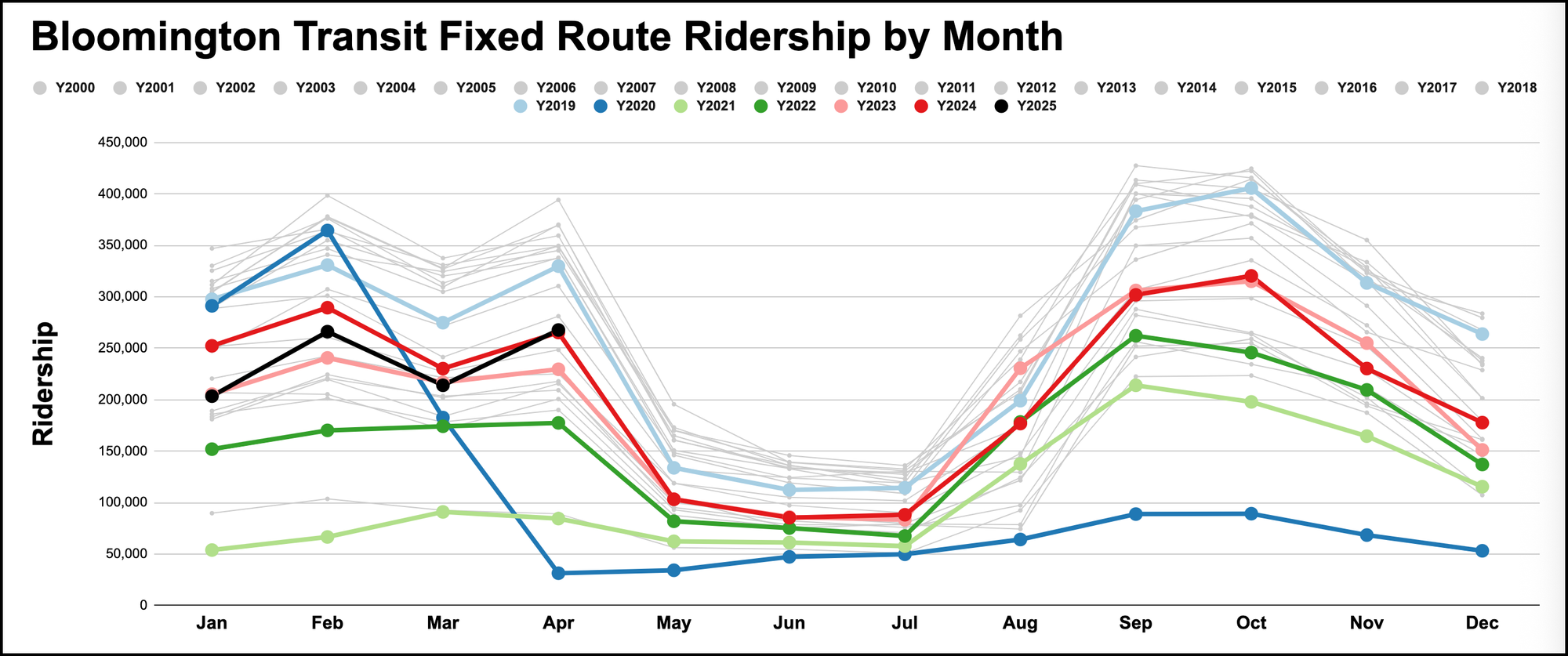
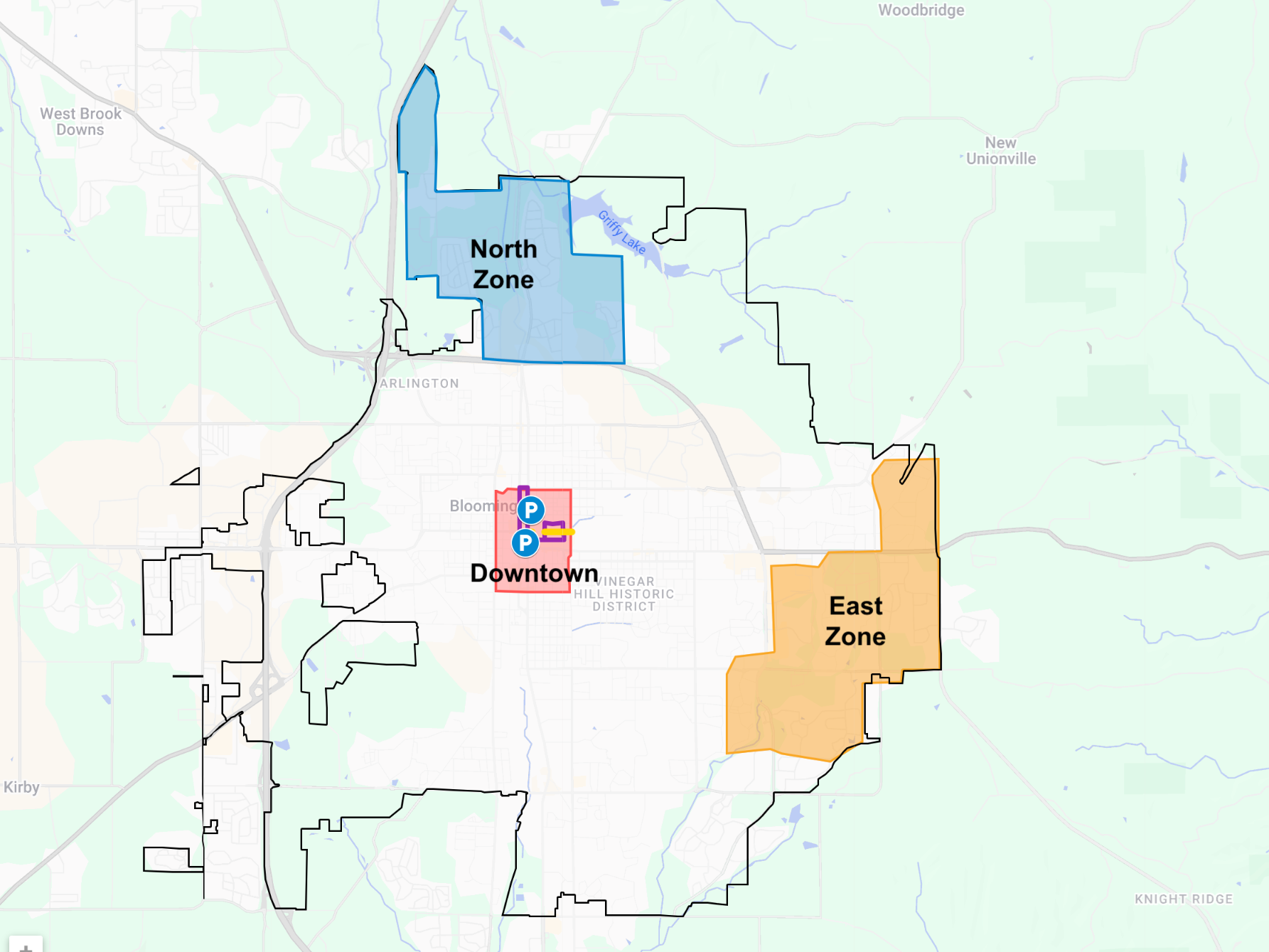
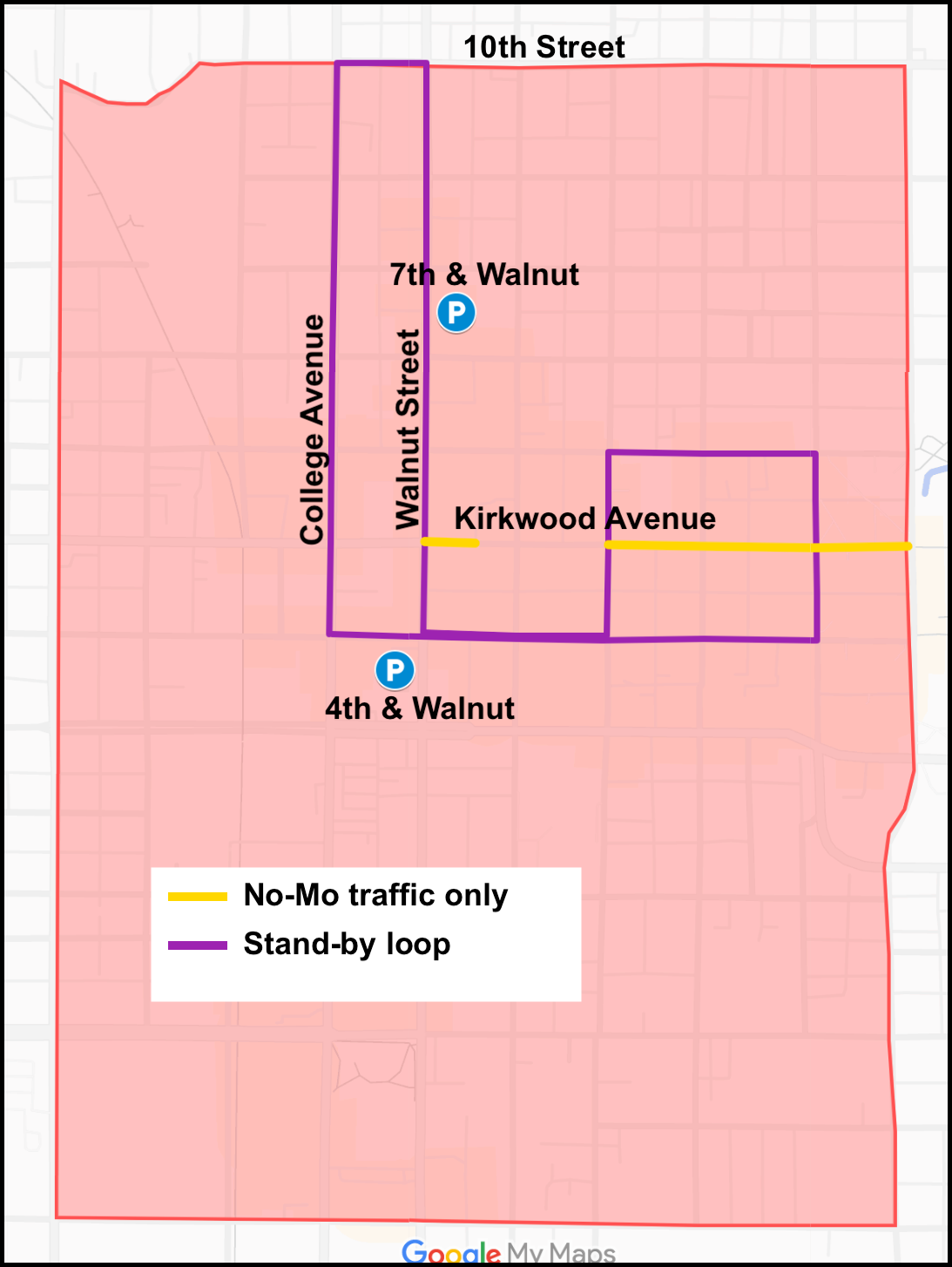



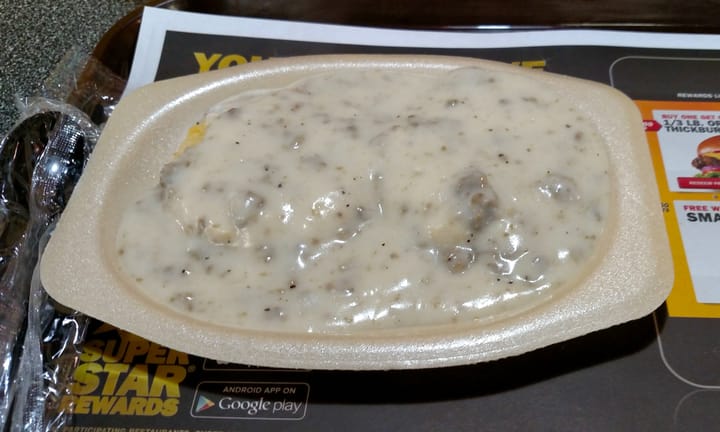
Comments ()